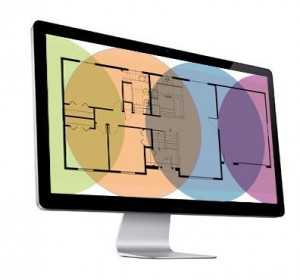As a leading provider of online, real-time automated data collection solutions, Eagle Europe is committed to investigating and implementing emerging technologies that provide our customers with a competitive edge. A substantial part of any automated data collection project will be the implementation of a wireless solution allowing the users to capture data at the point of use rather than having to return to a fixed terminal. Eagle have invested in a team of technical experts who work closely with all the leading manufacturers including Zebra, Cisco, and Honeywell/Intermec to ensure our customers have the best quality wireless capabilities and standards.
When designing a wired network, systems designers carefully plan the connections to each user location, taking into account the employee’s applications, the bandwidth required to deliver a productive user experience, and the resources to be shared among network users. To be successful, the same network design discipline applies to wireless local area networks (WLANs). Once designed, configuration of the network to provide optimum data throughput, maintainability and security is vital.
Today business customers’ single biggest objection to deploying wireless technology is the fact that it’s not secure. This opinion is perhaps based on the inadequate security features available when WLANs started to become popular. Wireless networks are now commonplace in business enterprises, in part due to the necessary enhancements that have been made to wireless security.
A site survey is a vital initial step in deploying a reliable WLAN. This is because wireless technology is very unpredictable without conducting tests using equipment within the environment the WLAN will be deployed. Even when using Omni-directional antennas, the propagation of radio waves rarely travels the same distance in all directions. They are readily absorbed by anything with moisture content (e.g. walls, products, and people) and are reflected by metal often resulting in a highly irregular coverage pattern.
To further complicate matters the required bandwidth for potential wireless clients must be taken into consideration together with site specific conditions. As an example WLANs may need to be deployed in external areas thus exposing equipment to local weather conditions or in hazardous areas where WLAN equipment must be certified to be ‘Intrinsically-Safe’.
Eagle Europe issues a detailed pre-survey questionnaire to ensure that our experienced survey engineers are fully prepared prior to arriving on site. This defines the customer requirements such as required coverage areas, type and number of proposed wireless devices, required data link speed, and redundancy. Finally, specialist Wi-Fi tools are now used by Eagle Europe to monitor both general Wi-Fi activity and potential sources of interference to assist in a successful trouble-free deployment.
Eagle Europe then produces a detailed report identifying the required components of the WLAN and detailing the steps required in order to prepare the site for a successful installation. This includes annotated facility plans detailing the required access point locations, photographs confirming mounting positions, Wi-Fi readings at strategic locations and details of any existing Wi-Fi activity. The report is sufficiently detailed to enable the customer to install the data cabling of Wi-Fi equipment in readiness for the WLAN to be configured and commissioned. Eagle Europe configures the Wi-Fi access points with IP addresses allocated by the customer to enable the access points to be installed as part of the cabling process.
If you are having any problems with connections in your facilities, please contact us.
